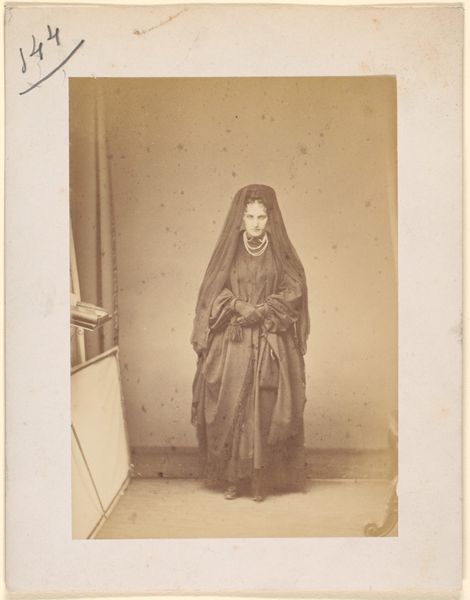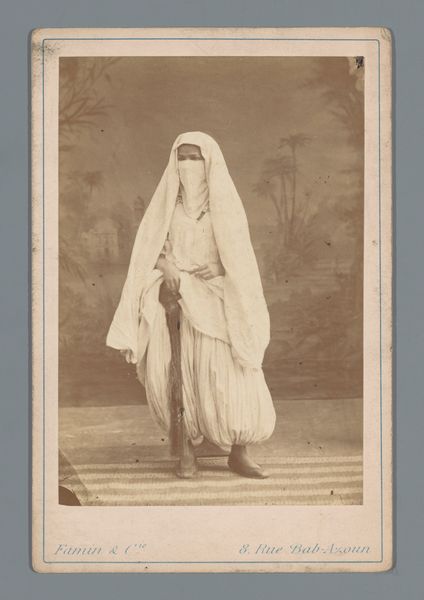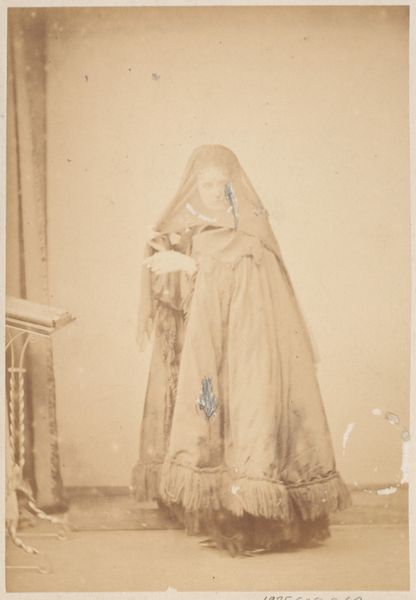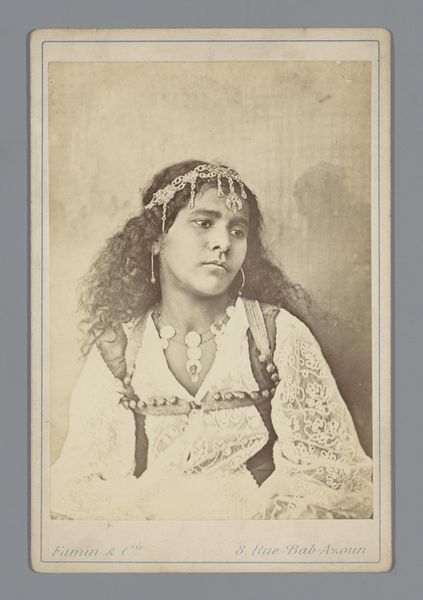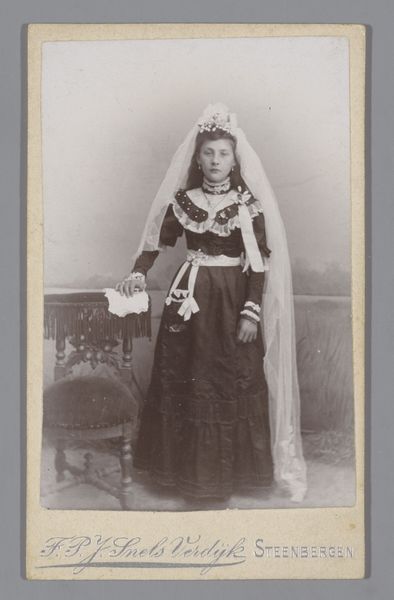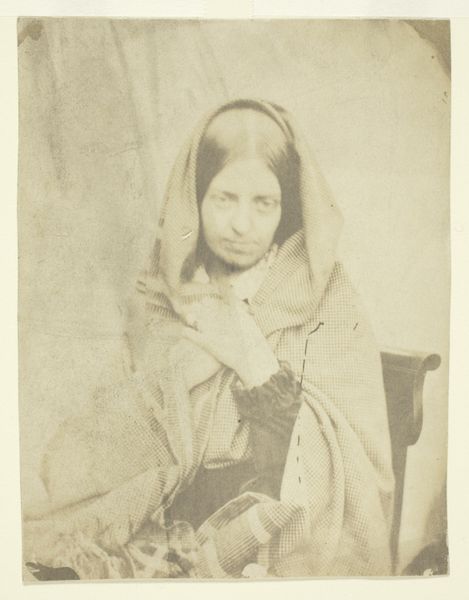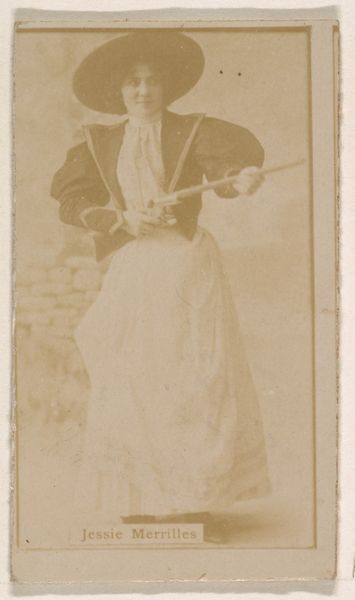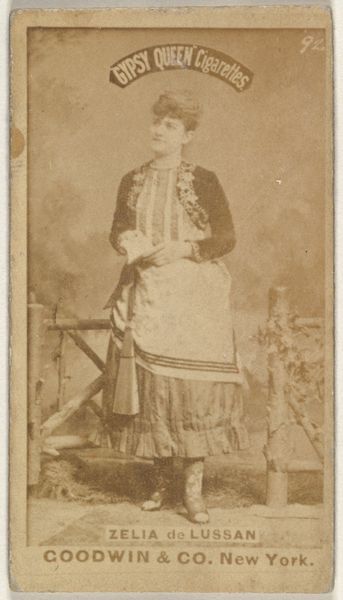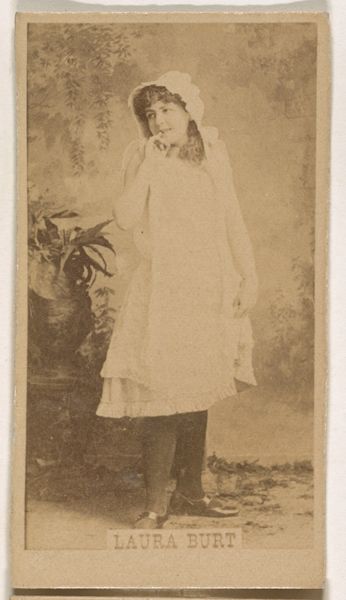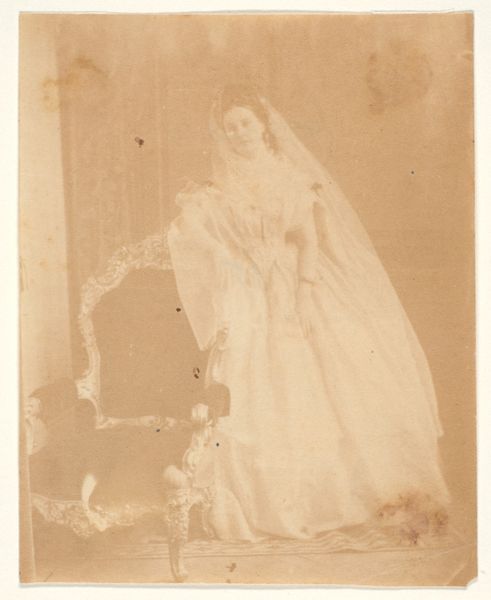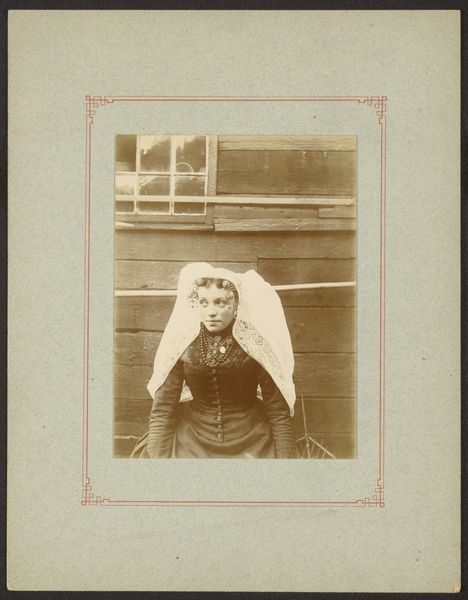
photography, gelatin-silver-print
#
portrait
#
photography
#
gelatin-silver-print
Copyright: Public Domain
Curator: Julia Margaret Cameron created this gelatin-silver print, entitled "Ceylonese Woman," sometime between 1875 and 1879. It's quite a striking portrait, now held in the collection of the Metropolitan Museum of Art. Editor: The soft focus gives the image a very dreamlike quality. It's immediately evocative of paintings by the Pre-Raphaelites—the woman's hair, the drape of the cloth...there is certainly a timelessness to this piece. Curator: Absolutely, and I think that effect is created deliberately by Cameron. Looking at the compositional structure, we can see how the loose waves of her hair frame the face, drawing the viewer's eye directly to her features. The composition is deceptively simple; there’s no real background, yet it’s undeniably effective. Editor: Indeed. I'm struck by the apparent vulnerability in her gaze. Wrapped as she is in what seems like a shawl or loose head covering, I immediately wonder about the significance of this gesture for women from Ceylon–now Sri Lanka–at that time. This simple covering takes on social and religious meaning. Curator: You make an excellent point about potential social interpretations. However, let's not overlook the purely aesthetic qualities. The chiaroscuro effect—the dramatic contrast between light and dark—adds depth and volume. The silver gelatin printing technique further enhances the textures and subtle tones, creating an almost ethereal quality. Editor: The dramatic play of light is fascinating, yes. It's worth remembering that portraiture can serve a function similar to mythmaking. Consider how Cameron deliberately fashioned her aesthetic as almost timeless in style; I also sense the attempt to capture the ‘essence’ of a culture through one of its people, imbuing this “Ceylonese Woman” with representational weight beyond just that of one individual. Curator: A loaded topic. It speaks to a grander discourse of art production and imperial documentation during that period. Still, irrespective of its historical implications, as an artwork, the success of “Ceylonese Woman” lies in the striking compositional clarity. Editor: Precisely. Through symbol and form, Cameron manages to both obscure and reveal a rich interiority in her subject. This has left me reflecting on how the piece might resonate differently through the passage of time.
Comments
No comments
Be the first to comment and join the conversation on the ultimate creative platform.
